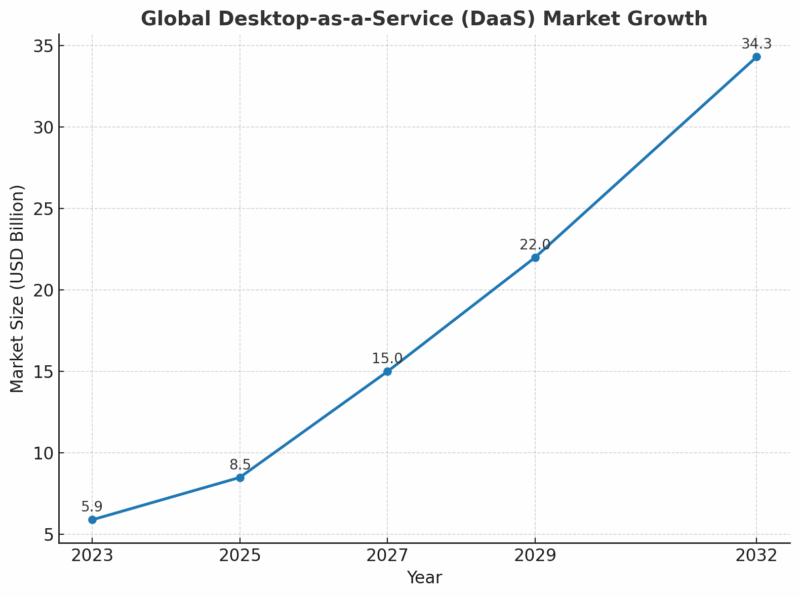A seismic shift is underway in workplace computing. According to Gartner, Desktop-as-a-Service (DaaS) is rapidly becoming more cost-effective and scalable than traditional laptops, positioning it to become the predominant workspace model by 2027.
Cost and Adoption Trends
Gartner forecasts that DaaS will reach cost-efficiency for 95% of the workforce by 2027, a dramatic increase from just 40% in 2019. DaaS spending is projected to climb from $4.3 billion in 2025 to $6 billion by 2029, reflecting widespread migration away from on-premises virtual desktop infrastructure.
Growth Projections
Market analysts estimate the global DaaS market was valued at $5.9 billion in 2023 and is expected to surge to $34.3 billion by 2032, achieving an annual growth rate (CAGR) of 21.5%.

Why DaaS Surpasses Laptops
- Lower Total Cost of Ownership (TCO): Pairing DaaS with thin-client endpoints typically results in significantly lower TCO compared to traditional laptop deployments.
- Operational Flexibility: DaaS is being adopted across diverse roles, remote workers, contractors, and frontline staff, providing scalable, secure virtual desktops.
- Vendor Leadership: Gartner identifies leaders like Microsoft (Azure Virtual Desktop, Windows 365, Dev Box), AWS, Citrix, and Omnissa, each bringing robust capabilities for managing cloud-based virtual workspaces.
Industry Outlook
Gartner reports a near-complete shift away from on-prem VDI solutions, favoring DaaS or hybrid cloud models. The rapid advancements in the tech landscape and improved affordability are key to this transition. Challenges such as vendor lock-in and licensing complexity remain, but solutions are evolving to address these issues
Outlook: Will Laptops Fade?
While DaaS is on track to become a dominant workplace solution, traditional laptops aren’t disappearing overnight. Specialized roles and workflows still rely on high-performance hardware. However, especially for organizations prioritizing scalability, security, and sustainability, DaaS is emerging as the preferred choice. As the market grows, we may see laptops transition from staple workplace tools to specialized or backup devices.






